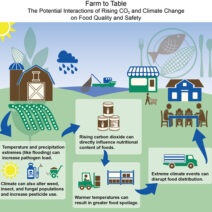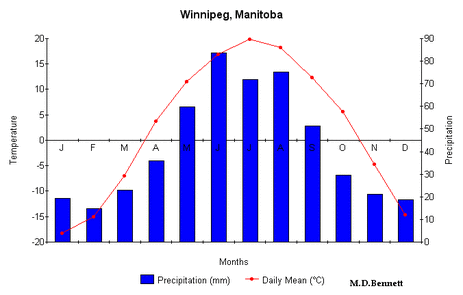As global temperatures steadily ascend, a palpable sense of urgency envelops discussions concerning climate change. The phenomenon, once relegated to distant predictions, now permeates daily news cycles, scientific analyses, and public discourse. This urgency flows from a collective acknowledgment of a stark reality: global warming is no longer an abstract concept; it has irrevocably transformed into a formidable crisis that beckons immediate attention.
The earth’s climate has undergone gradual changes over millennia due to natural phenomena. However, the exponential rise in greenhouse gas emissions, predominantly attributable to human activity since the late 19th century, has accelerated these changes. Industrialization, urbanization, and the proliferation of fossil fuel consumption have catalyzed an unprecedented surge in atmospheric carbon dioxide levels. The Intergovernmental Panel on Climate Change (IPCC) warns that a mere increase of 1.5 degrees Celsius above pre-industrial levels could lead to catastrophic ramifications for ecosystems and human societies alike.
Recent data elucidate alarming trends. Various regions around the globe are experiencing climactic extremes: heatwaves scorching typically temperate locales, unprecedented flooding inundating coastal cities, and wildfires ravaging vast expanses of forestland. These events are not isolated occurrences; they coalesce into a broader narrative underscoring a destabilized climate. An observable pattern emerges: as the planet warms, natural disasters burgeon in frequency and intensity, revealing a direct correlation between anthropogenic emissions and environmental degradation.
One illuminating factor contributing to the urgency of climate change is the phenomenon of feedback loops. For instance, as Arctic ice diminishes, its reflective capacity lessens, prompting increased absorption of solar energy by the darker ocean waters. This amplified warmth accelerates ice melt, fostering a vicious cycle—a feedback loop that exacerbates global warming. Similarly, thawing permafrost releases methane, a potent greenhouse gas, which further intensifies atmospheric warming. The understanding of these feedback mechanisms underscores the critical juncture at which humanity finds itself: the window of opportunity for mitigation is narrowing rapidly.
Public awareness regarding climate change has surged. Movements led by young activists have illuminated the urgency of the crisis, galvanizing individuals and communities worldwide. The demand for sustainability and accountability is escalating. Governments and corporations are increasingly being scrutinized for their environmental policies. However, the challenge resides not solely in public advocacy but also in translating this fervor into actionable policies that can effectuate tangible change. Governments must enact rigorous climate commitments, while businesses must embrace sustainable practices to diminish their carbon footprints.
The socioeconomic ramifications of climate change are profound. Vulnerable communities, disproportionately affected by climatic shifts, bear the brunt of environmental degradation. Food security, access to clean water, and public health are intricately linked to climatic conditions. Disruption caused by droughts and floods disproportionately impacts low-income populations, exacerbating existing inequalities. Without immediate intervention, the widening chasm between socioeconomic classes will only deepen, fostering social unrest and geopolitical instability.
Moreover, global warming’s impact on biodiversity is equally disconcerting. Ecosystems across the globe are experiencing drastic alteration. Species extinction rates have accelerated, with numerous organisms unable to adapt to rapidly changing environments. Coral reefs, often dubbed the rainforests of the sea, are facing substantial threats from ocean acidification and rising temperatures, leading to widespread coral bleaching. This loss of biodiversity has cascading effects, jeopardizing food sources, destabilizing ecosystems, and diminishing the resilience of natural systems essential for human survival.
Nevertheless, there exists a kernel of optimism amidst the crisis. The growth of renewable energy technologies heralds a potential paradigm shift. Solar, wind, and geothermal energies offer alternatives to fossil fuels, presenting pathways toward a sustainable future. Investment in green infrastructure, coupled with rigorous research and development in carbon capture technology, can help mitigate the dire consequences of climate change. Furthermore, the integration of sustainable practices into the fabric of urban planning, agriculture, and industry can foster resilience while addressing climate disparities.
Global cooperation is imperative in tackling the climate crisis. The Paris Agreement serves as a focal point for international efforts aimed at curbing emissions and fostering sustainability. However, commitments made must not remain merely rhetorical; they necessitate binding actions that yield verifiable results. Countries must set ambitious targets and collaborate across borders, sharing technology, expertise, and resources to combat climate change effectively.
In conclusion, the specter of global warming looms large, and the desired equilibrium is increasingly elusive. The intricate web of causation reveals that climate change is not merely an environmental issue but a multifaceted crisis interwoven into the fabric of political, social, and economic systems. The responsibility to act lies on the shoulders of individuals, governments, and corporations alike. The time to galvanize efforts is now, for the future of humanity and the planet hinges on the actions taken today. The question remains: how quickly will we rally to address this existential crisis before we truly venture beyond the brink?







